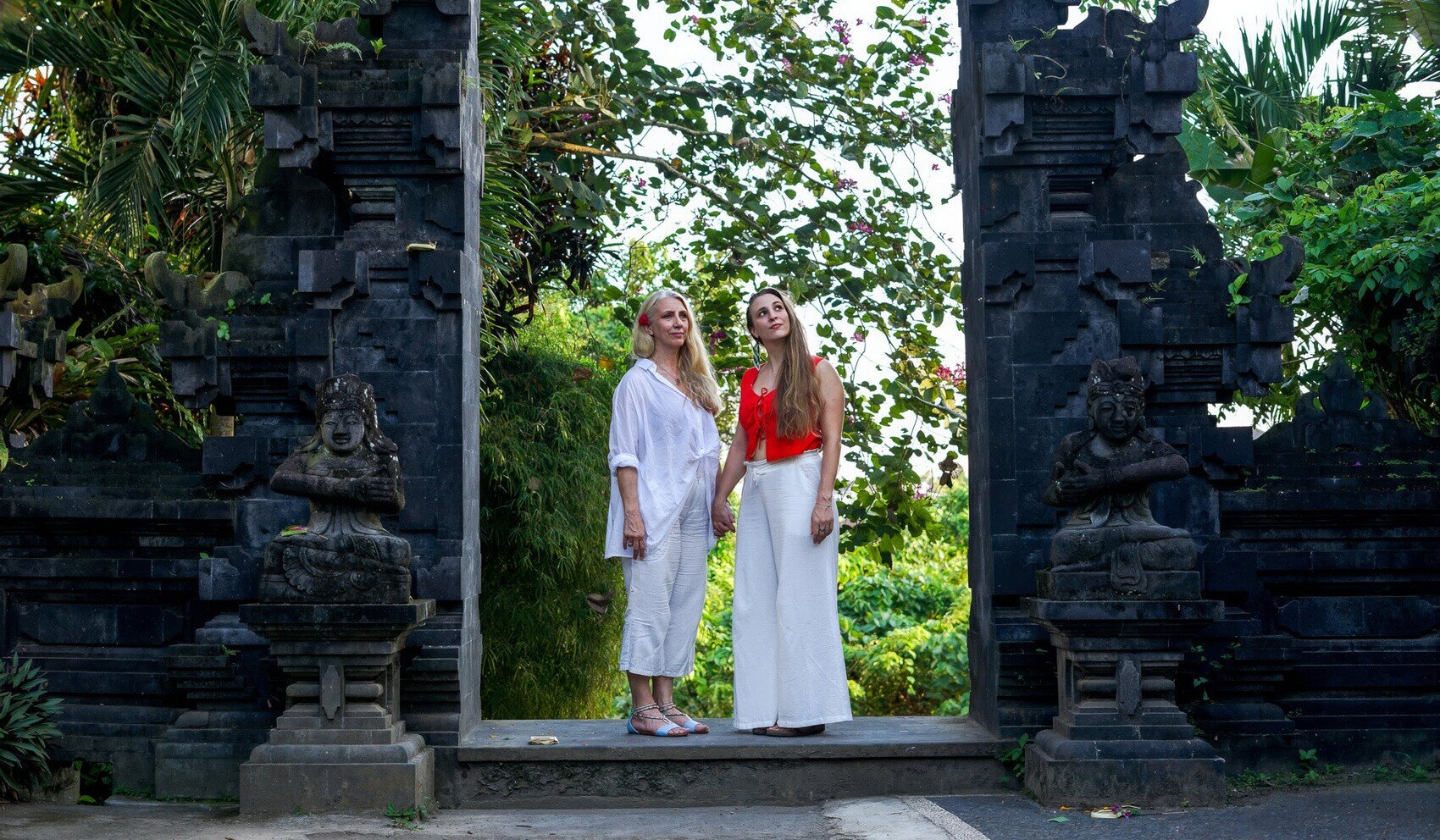The Loneliness Cure Isn’t More Friends — It’s Deeper Connection
You don’t have to be a party person to need people. But how much sociability is enough? Enough to feel whole. Enough to stay well.
Turns out, the answer is both biological and deeply personal, shaped by our brains, our cultures and our life seasons.
Neuroscientist Matthew Lieberman, in his book Social: Why Our Brains Are Wired to Connect (2013), argues that our brains are inherently social. The same neural network that helps us think about ourselves also lights up when we think about other people. It’s called the default mode network, and it becomes active when we daydream, imagine conversations or reflect on relationships.
Studies show a strong overlap between the DMN and areas involved in social cognition, which many now call the social brain.
What is even more striking is that social rejection activates the same brain regions as physical pain (Eisenberger & Lieberman, 2004). Your brain treats being left out like a punch to the gut.
And the reason is that our evolutionary past treated being isolated from the group as death. We survived because we stayed connected.
Not Everyone Needs The Same Amount Of Social Time
You might be an introvert who loves solitude.
Or an extrovert who feels flat without people.
Both are normal.
What matters more than how many people you see, is how emotionally safe and meaningful those interactions are.
Research from Susan Pinker (The Village Effect, 2014) shows that even brief, in-person interactions with friends, neighbours, shopkeepers lower stress, improve memory and boost longevity.
And it’s not about crowd size. Psychologist Robin Dunbar found that we can only manage about 150 stable social relationships, with only 5 deeply intimate connections at any given time.
Culture Matters Too
What sociability looks like varies by culture:
- Mediterranean and Latin cultures thrive on daily in-person interactions: food, family and loud conversations.
- Scandinavian and Anglo cultures value privacy and planned socialising: fewer interactions, but strong systems of trust and support.
- Indigenous and African communities often centre life around kinship, communal rituals and shared care.
There’s no best style.
What is most important to remember is that isolation in any culture tends to predict higher levels of anxiety, depression and even heart disease (Holt-Lunstad et al., 2015).
So What’s The Absolute Minimum?
You might be wondering what’s the least I need to do socially to stay mentally well? Here’s what the research suggests:
- One meaningful conversation per day with someone who sees you and hears you.
- One face-to-face interaction per week: coffee with a friend, a walk with a neighbour, a shared meal.
- One sense of belonging to a group, a community, a shared identit, where you feel safe to be yourself.
These small points of contact, even if brief, are enough to regulate your nervous system, reduce the stress hormone cortisol and increase the bonding hormone oxytocin, which is critical for emotional regulation (Taylor, 2006).
Let’s Talk About Travel
The way we connect shows up in how we move through the world, too. Some of us prefer to travel solo, drawn to the freedom, clarity and self-reflection that solitude allows.
Others feel most alive when traveling with someone they love, creating shared memories and leaning into mutual support.
There’s no right way, just different ways of being.
So, what’s your preference? Which option is you:
- I prefer to travel solo — I love the independence
- I prefer a great companion — shared joy is deeper
- I prefer to travel with a group of friends or family
- I prefer to travel with a group of strangers
There’s no ideal number of friends. No trophy for the busiest social calendar. But there is a deep cost to chronic disconnection, emotionally and physically.
So if you’ve been feeling off lately, ask yourself:
- When was the last time I felt genuinely connected?
- Do I need more solitude or more community?
- Who in my life feels safe to be real with?
You don’t need a crowd.
You just need a few people who feel like home.
Your Brain Is Wired for Connection! Let’s Nourish That Together
If this article made you reflect on your own need for deeper connection, our Bali Retreat might be exactly what your heart and nervous system have been craving.
Set in the lush, restorative environment of Bali, this retreat offers the space to slow down, reflect and build genuine bonds — with yourself and with others on a similar journey.
Through an immersive workshop, movement, shared meals and moments of stillness, you’ll explore what meaningful connection really looks like.
Whether you come solo or with someone you trust, this experience is designed to help you feel truly seen, heard and supported, the way we’re all wired to be.
Real Connection Starts With Better Conversations
We’re wired for connection. But in a fast-paced world, it’s easy to go days without a moment of true presence with another human being. The Heart 2 Heart Conversations Prompt Cards are designed to change that!
Whether it’s with a friend, a client, or your team, these cards create space for meaningful dialogue — the kind that helps us feel seen, heard and emotionally safe.
Use them to spark daily moments of connection that support wellbeing, deepen trust and remind us of what it means to be fully human.
Because sometimes, one real conversation is all it takes.
Sources:
- Eisenberger, N. I., & Lieberman, M. D. (2004). Why rejection hurts: A common neural alarm system for physical and social pain. Trends in Cognitive Sciences
- Holt-Lunstad, J., Smith, T. B., Baker, M., Harris, T., & Stephenson, D. (2015). Loneliness and social isolation as risk factors for mortality: A meta-analytic review. Perspectives on Psychological Science
- Lieberman, M. D. (2013). Social: Why our brains are wired to connect. Crown Publishing.
- Pinker, S. (2014). The Village Effect: How face-to-face contact can make us healthier and happier. Spiegel & Grau.
- Taylor, S. E. (2006). Tend and befriend: Biobehavioral bases of affiliation under stress. Current Directions in Psychological Science
- i4 Neuroleader (353)
- Leadership & Culture (336)
- Brain Health & Wellbeing (206)
- Innovation (97)
- Performance (85)
- Our News (79)
- Collaboration (68)
- Agility (53)
- Practitioner Stories (44)
- In The Press (36)
- Make Me A Leader (33)
- Balance (31)
- Integration (30)
- Imagination (29)
- Awareness (23)
- Brain-Friendly Channel (22)
- Brain-Friendly Leadership (22)
- Communication (22)
- Curiosity (21)
- Inspiration (19)
- Intuition (19)
- Attitude (17)
- Courage (16)
- Adaptability (14)
- Case Studies (14)
- Drive (14)
- Generosity (13)
- Ethics (9)
- Mental Readiness (9)
- Influence (8)
- Retreat (8)
- Brain-Friendly Leadership (1)
- Oracle Cards (1)
- 1 November 2025 (2)
- 1 September 2025 (3)
- 1 August 2025 (5)
- 1 July 2025 (5)
- 1 June 2025 (2)
- 1 April 2025 (1)
- 1 March 2025 (8)
- 1 February 2025 (3)
- 1 September 2024 (4)
- 1 July 2024 (2)
- 1 June 2024 (6)
- 1 May 2024 (2)
- 1 April 2024 (3)
- 1 March 2024 (1)
- 1 November 2023 (1)
- 1 August 2023 (1)
- 1 July 2023 (2)
- 1 June 2023 (2)
- 1 May 2023 (4)
- 1 April 2023 (2)
- 1 March 2023 (7)
- 1 February 2023 (4)
- 1 January 2023 (1)
- 1 September 2022 (1)
- 1 May 2022 (3)
- 1 April 2022 (1)
- 1 March 2022 (5)
- 1 February 2022 (4)
- 1 January 2022 (4)
- 1 December 2021 (2)
- 1 November 2021 (4)
- 1 October 2021 (3)
- 1 September 2021 (6)
- 1 August 2021 (1)
- 1 April 2021 (1)
- 1 December 2020 (2)
- 1 November 2020 (1)
- 1 September 2020 (1)
- 1 August 2020 (1)
- 1 July 2020 (3)
- 1 June 2020 (4)
- 1 May 2020 (3)
- 1 April 2020 (4)
- 1 March 2020 (6)
- 1 February 2020 (4)
- 1 January 2020 (2)
- 1 December 2019 (3)
- 1 November 2019 (3)
- 1 October 2019 (5)
- 1 September 2019 (4)
- 1 August 2019 (4)
- 1 July 2019 (4)
- 1 June 2019 (5)
- 1 May 2019 (9)
- 1 April 2019 (9)
- 1 March 2019 (8)
- 1 February 2019 (7)
- 1 January 2019 (8)
- 1 December 2018 (5)
- 1 November 2018 (10)
- 1 October 2018 (16)
- 1 September 2018 (9)
- 1 August 2018 (10)
- 1 July 2018 (9)
- 1 June 2018 (8)
- 1 May 2018 (9)
- 1 April 2018 (9)
- 1 March 2018 (9)
- 1 February 2018 (8)
- 1 January 2018 (8)
- 1 December 2017 (6)
- 1 November 2017 (9)
- 1 October 2017 (9)
- 1 September 2017 (8)
- 1 August 2017 (10)
- 1 July 2017 (8)
- 1 June 2017 (8)
- 1 May 2017 (9)
- 1 April 2017 (8)
- 1 March 2017 (6)
- 1 January 2017 (3)
- 1 December 2016 (4)
- 1 November 2016 (5)
- 1 October 2016 (4)
- 1 September 2016 (2)
- 1 August 2016 (4)
- 1 July 2016 (4)
- 1 June 2016 (2)
- 1 May 2016 (3)
- 1 April 2016 (3)
- 1 March 2016 (7)
- 1 February 2016 (2)
- 1 January 2016 (5)
- 1 December 2015 (2)
- 1 November 2015 (2)
- 1 October 2015 (4)
- 1 September 2015 (2)
- 1 August 2015 (2)
- 1 July 2015 (1)
- 1 June 2015 (3)
- 1 May 2015 (4)
- 1 April 2015 (5)
- 1 March 2015 (3)
- 1 February 2015 (3)
- 1 January 2015 (3)
- 1 December 2014 (3)
- 1 November 2014 (3)
- 1 October 2014 (3)
- 1 September 2014 (5)
- 1 August 2014 (4)
- 1 July 2014 (5)
- 1 June 2014 (3)
- 1 May 2014 (1)
- 1 March 2014 (1)
- 1 December 2013 (2)
- 1 November 2013 (1)
- 1 July 2013 (1)
- 1 June 2013 (1)
- 1 May 2013 (3)
- 1 April 2013 (1)
- 1 March 2013 (2)
- 1 February 2013 (1)
- 1 January 2013 (2)
- 1 November 2012 (1)
- 1 October 2012 (1)
- 1 September 2012 (1)
- 1 August 2012 (2)
- 1 July 2012 (1)
- 1 June 2012 (1)
- 1 May 2012 (2)
- 1 April 2012 (1)
- 1 February 2012 (1)
- 1 January 2012 (1)
- 1 November 2011 (1)
- 1 October 2011 (3)
- 1 September 2011 (2)
- 1 July 2011 (1)
- 1 June 2011 (1)
- 1 May 2011 (1)
- 1 April 2011 (1)
- 1 March 2011 (1)
- 1 February 2011 (2)
- 1 January 2011 (4)
- 1 December 2010 (4)
- 1 November 2010 (3)
- 1 October 2010 (5)
- 1 September 2010 (4)
- 1 August 2010 (4)
- 1 July 2010 (3)
- 1 June 2010 (4)
- 1 May 2010 (7)
- 1 April 2010 (5)
Subscribe by email
You May Also Like
These Related Stories

Break The Cycle & Transform Your Leadership

Why A Brain-Friendly Immersion Will Benefit Not Just Your Professional But Also Your Private Life





No Comments Yet
Let us know what you think